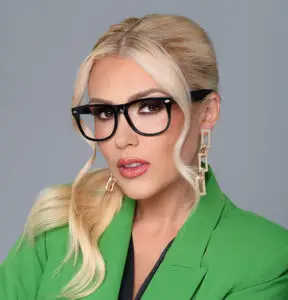KEY POINTS
- Love evolves. Our needs in a partner change over time.
- Adaptability matters more than a “perfect match.”
- Relationships have value, even if they’re not forever.
What if love isn’t about finding the one, but about finding the right one for who we are right now?
This perspective challenges one of our most cherished romantic beliefs—the idea of a singular, perfect match who will be right for us from the moment we meet until death do us part. But research in psychology and neuroscience suggests we may be better off seeking the right person for our current life stage rather than an eternal, perfect match.
The evidence for this comes from multiple fields. As early as 1890, William James proposed that our brains are not static but shaped by experience.5 This concept is now well established and further expanded by neuroscience as neuroplasticity, or the brain’s ability to develop, change, and adapt well into adulthood.1
This ongoing transformation shapes how we experience emotions, make choices, and build relationships, alongside natural changes in our bodies. Recognizing these shifts has been important in developmental psychology, which explores different life stages, each with its own challenges and needs. Even our hormones and basic biology change over time, influencing what we find attractive and what we look for in a partner.
These changes not only shape personal growth but also influence how relationships develop over time. As our thinking and emotions change, so do our expectations, communication styles, and the ways we connect with others. Research in psychology indicates that what we seek in a partner—whether emotional support, excitement, or shared goals—can shift over time. A large international study of single women found that preferences for certain traits, such as confidence and parenting intentions, change with age, reflecting evolving life priorities and developmental goals.2 Understanding this natural evolution helps us make sense of attraction, compatibility, and what keeps relationships strong in the long run.
Consider the typical progression.
In our early 20s, our brains are still developing, particularly in areas related to risk assessment and long-term planning. During this “explorer” phase, we’re often drawn to partners who encourage adventure, personal growth, and self-discovery. These relationships tend to be intense and transformative, even if they don’t last forever. Their value isn’t measured by longevity but by how well they align with this stage of rapid change.
As we move into our late 20s and early 30s (though the timing may vary for each person), our priorities often shift. This “builder” phase is typically centered on establishing careers, stability, and long-term goals. A partner who was perfect for spontaneity and exploration may no longer fit the evolving vision of the future. This doesn’t diminish the significance of earlier relationships—they were meaningful in their time and served their role in personal development.
The pattern continues…
The “nester” phase in the mid-30s often brings a stronger desire for family, deeper commitments, and a sense of community. The “redefiner” phase in the 40s is often marked by reassessment of career, relationships, and personal fulfillment, prompting a shift in what feels fulfilling in a partner. Each stage comes with its own needs and compatibility factors.
“But what about growing together?” you might ask. Many couples do navigate multiple life stages successfully, and research suggests that long-term compatibility depends more on adaptability and timing than on finding a single ideal match.4 Rather than expecting their initial compatibility to remain unchanged, they recognize and support each other’s evolution.6
The presumption of this time-sensitive view of compatibility is intriguing and, perhaps, even controversial. But instead of asking, “Is this the one?” we might be better served by asking, “Is this the right person for who I am now and who I’m becoming?” This change in perspective doesn’t diminish the significance of relationships—it reinforces that connections are still meaningful, even as they evolve.
Research suggests that long-term compatibility depends less on an ideal match and more on adaptability, mutual investment, and the willingness to grow together.4, 6 The reciprocity factor also plays a critical role. Partners who actively engage in the relationship and respond to each other’s evolving needs tend to sustain more resilient connections over time.3
This view may help explain why rekindled romances may often disappoint. The person who was perfect for you in high school might feel completely wrong 20 years later—not because either of you are “worse,” but because you’re both at different life stages with different needs and priorities.
Perhaps this perspective can free us from the pressure of trying to force every promising relationship to last forever—whether by keeping it in stasis or preserving the current status quo. Sometimes, the healthiest choice is acknowledging that a relationship has served its purpose for a particular life stage and allowing space for what comes next.
This can mean different things to different people.
Some may choose to part ways, recognizing that their paths have diverged, while others may be encouraged to reevaluate their priorities and invest in the effort required to adapt and grow together in ways that align with who they are becoming.
This doesn’t mean we should approach relationships casually or without commitment. Instead, it suggests we should commit to authenticity and growth, both for ourselves and our partners. So, the next time someone asks if you’ve found “the one,” consider a different response: “I’ve found the right one right now.” And perhaps later, that will still be true—or it will evolve into something just as meaningful in a different way. In a world of constant change and growth, that might be the most honest and healthy approach to love we can take.
References
- Been, M., Janssen, E. M., Galli, G., Li, Y., & Goebel, R. (2022). The role of neuroplasticity in lifelong learning: Neuroscientific insights and implications for education. Educational Psychology Review, 34(1), 33-54.
- Botzet, L. J., Shea, A., Jünger, J., Pisanski, K., & Hahn, A. C. (2023). The link between age and partner preferences in a large, international sample of single women. Human Nature, 34(1), 1–20.
- Carter, B., Jordan, A., Forgeron, P., Qualter, P., & Saron, H. (2023). A shared love: Reciprocity and hopefulness in romantic relationships of young adults with chronic pain. Frontiers in Pain Research, 4, 1179516.
- Finkel, E. J., Simpson, J. A., & Eastwick, P. W. (2017). The psychology of close relationships: Fourteen core principles. Annual Review of Psychology, 68(1), 383–411.
- James, W. (1890). The principles of psychology (Vol. 1). Henry Holt and Company.
- Neff, L. A., & Karney, B. R. (2009). Optimistic expectations in early marriage: A resource or vulnerability for adaptive relationship functioning? Journal of Personality and Social Psychology, 97(4), 742–755.


